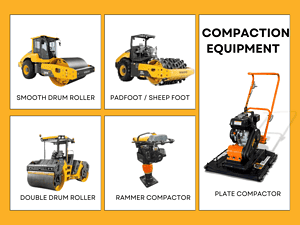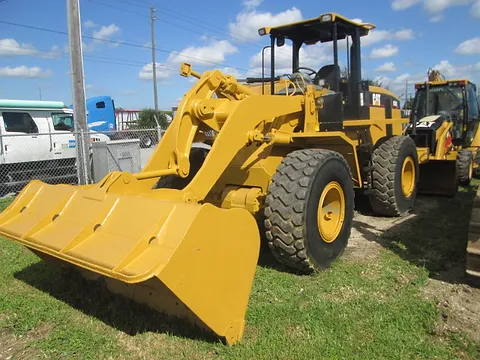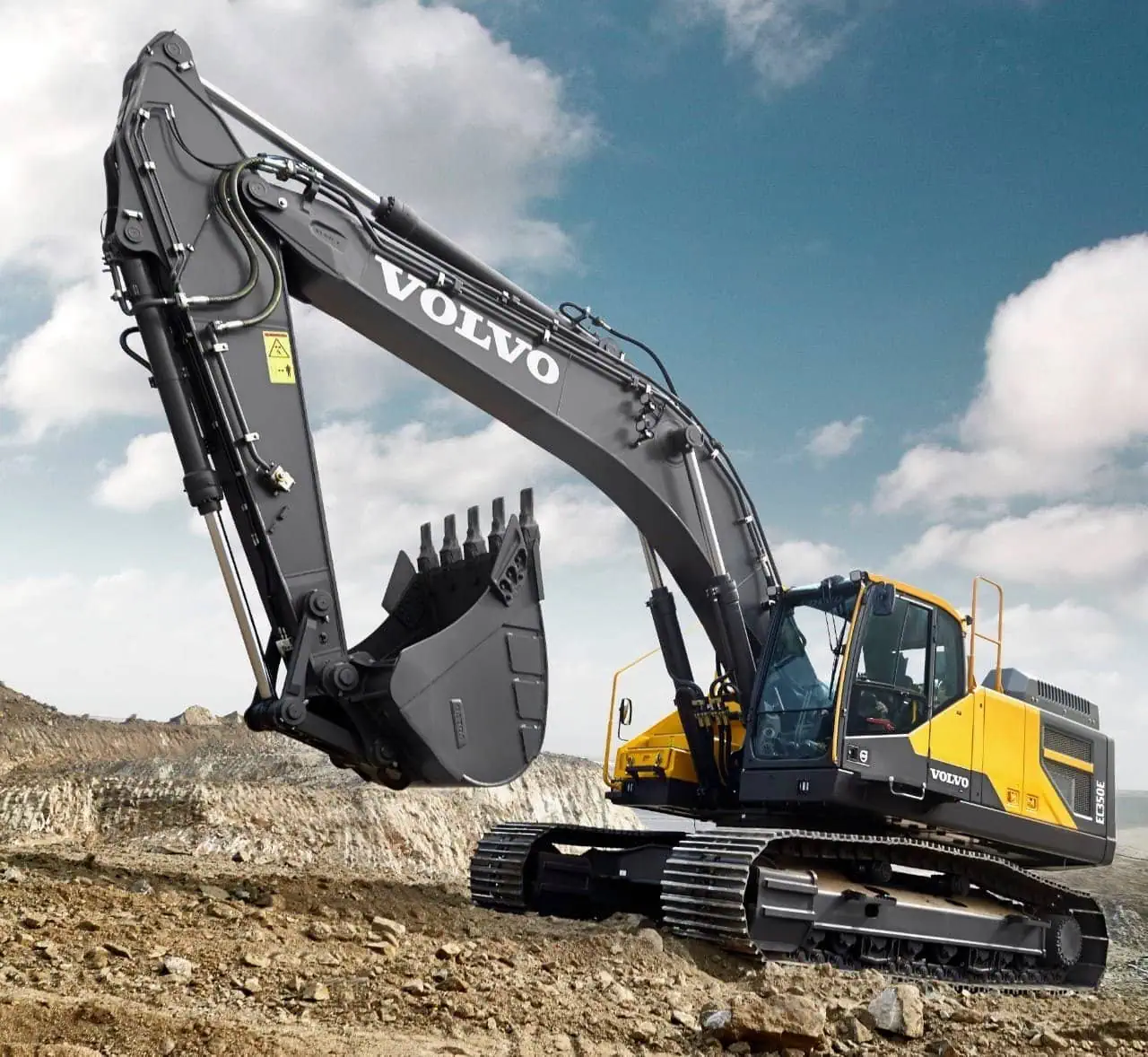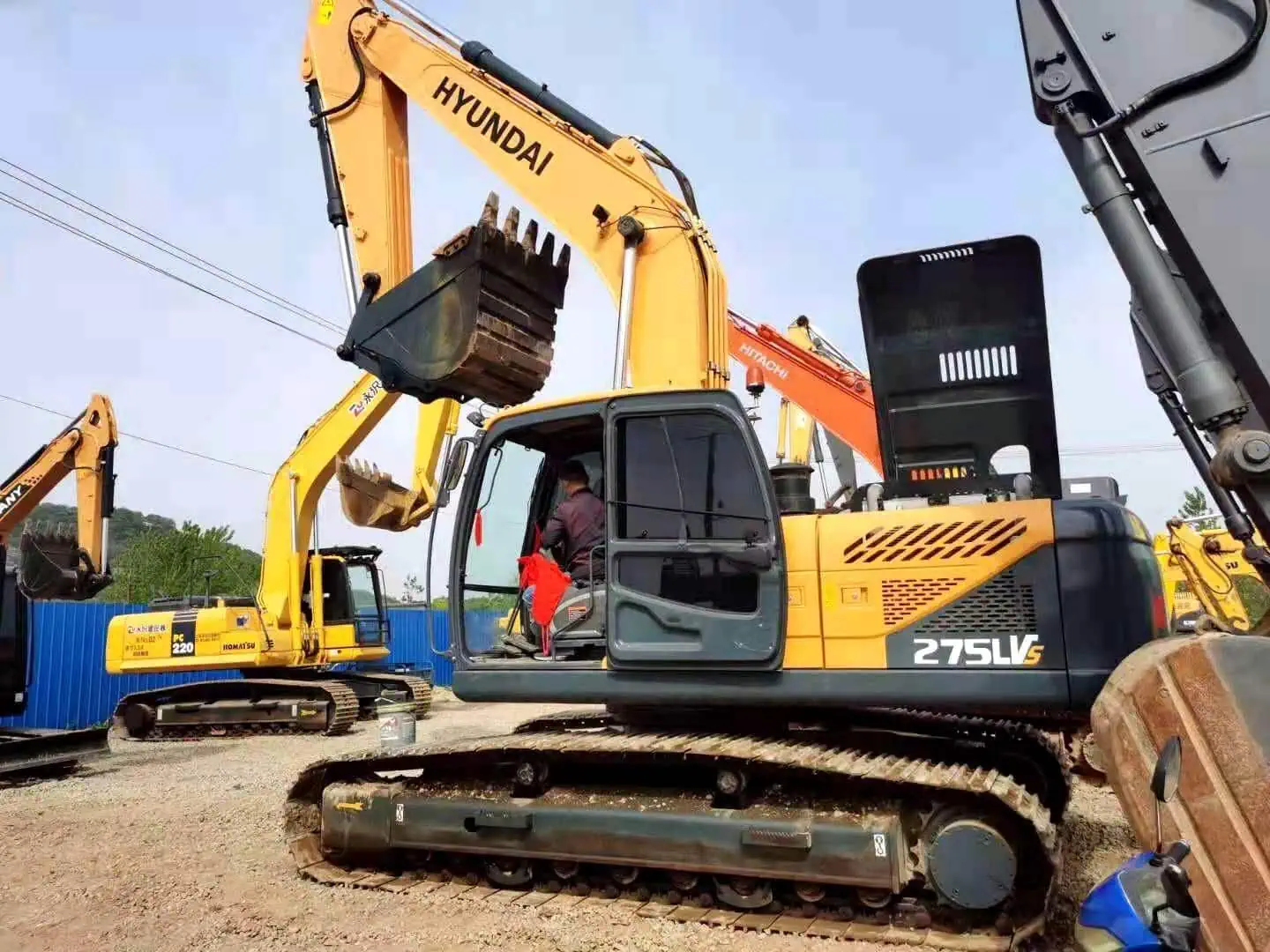When the job is done, check the equipment for excessive wear and tear. Check the tires and cables. Look at the hydraulic hoses. Make sure everything is ready to go the next time you need it. If something is ragged on your equipment today, replace it before you use it again. You need to change it out before it breaks so you can take care of your equipment and take care of the people who work on your equipment.
What is a gantry crane is a type of overhead crane, but unlike traditional cranes, it has a set of legs supported on tracks or wheels, allowing it to move across large distances. These cranes are typically used for outdoor applications where flexibility and mobility are needed. In this guide, we’ll compare gantry cranes to other common types like overhead, tower, and mobile cranes, helping you understand the best choice for your project.
Let’s take a closer look at the unique features of gantry cranes and how they differ from other crane types to understand their advantages.

Table of Contents
ToggleUnderstanding Gantry Cranes
Definition of a Gantry Crane
A gantry crane, on the other hand, is a huge structure that has a horizontal bridge supported by two or more legs. Those legs can run on rails, they can run on wheels, or they’re stationary (good luck moving your load with that one). Hanging from that horizontal beam is what’s called the trolley. The trolley carries your hoist, which is the lifting and lowering device that grabs your load.
Key Components of a Gantry Crane:
| Component | Description |
| Bridge | The main horizontal structure that holds the hoist and trolley. |
| Legs | Vertical supports that elevate the crane’s frame and can move across rails or have wheels. |
| Trolley | Moves along the bridge to transport the hoist across the span. |
| Hoist | Lifts and lowers the load, typically using a lifting mechanism like a hook or a sling. |
What Makes Gantry Cranes Unique?
Another type of crane that we like and use in our business is a gantry crane. Gantry cranes are unique in that they are mobile and have an ability to span a pretty good distance. They can be used outdoors, like in a shipping dock, and can move heavy items or load and unload things. They can also move a lot of different things and can be customized.
Types of Cranes and Key Differences
Gantry Crane vs. Overhead Crane
Gantry cranes are also common in outdoor settings because they operate in the open air. They can be used to move materials, heavy equipment, or to load and unload freight at docks. There are many other uses for gantry cranes, and they can be designed to fit almost any situation where something heavy needs to be moved or held.
| Feature | Gantry Crane | Overhead Crane |
| Mobility | Can move on rails or wheels | Stationary, typically indoors |
| Lifting Capacity | Generally higher lifting capacity due to its design | Lower lifting capacity compared to gantry cranes |
| Usage | Ideal for outdoor construction and port operations | Best for fixed indoor locations like factories or warehouses |
Explanation:
Gantry cranes commonly operate outdoors because they work in the open air and can be used to move items or heavy equipment or for loading and unloading freight at docks. While these are the most common uses for gantry cranes, they can be modified to do just about whatever you need something to do to lift and carry something heavy.
Gantry Crane vs. Tower Crane
Tower cranes are meant to lift up, meaning a perfectly perpendicular and vertical angle to the ground. They are predominantly used in constructing residential and commercial buildings that have more than ten floors. On the other hand, gantry cranes are made to lift whatever it is you need to pick up, and move it across the width or breadth, and typically not much further, although they can. Picking and placing heavy things is what these mobile gantry cranes are all about.
| Feature | Gantry Crane | Tower Crane |
| Lifting Capacity | Heavy lifting over a broad area | Primarily vertical lifting, with lower lateral capacity |
| Structure | Horizontal frame supported by legs | Vertical frame with a horizontal jib |
| Ideal Use | Construction sites, shipyards, warehouses | High-rise building projects where vertical lift is essential |
Explanation:
Custom & Modular Designed to fit your application or required footprint. or the beam for large grooves Enclosure At one end of the trunk, the enclosure is provided with a cutout that interfaces with the cover of the enclosed vertical guide. Provides crush protection for personnel, warning that loads can fall from docks You can easily modify the kit to fit your needs.
Gantry Crane vs. Mobile Crane
Mobile Cranes Tower Cranes Mobile Cranes are versatile and can be moved from site to site. Standard Gantry Cranes are typically stationary but can move back and forth in a specific area of a site
| Feature | Gantry Crane | Mobile Crane |
| Mobility | Can move within a specific area | Fully mobile, can move across various locations |
| Lifting Capacity | Generally higher for heavy-duty tasks | Lower lifting capacity in comparison |
| Cost | Higher initial investment for stationary models | Generally less expensive but less capable for large projects |
Explanation:
The benefits of mobile cranes are that they are easy to set up and break down, are relatively easy to transport, and can be taken to multiple work sites in a relatively short amount of time. The benefit of a gantry crane is that it can lift an incredibly heavy amount of weight over a large area but takes up less space than a traditional overhead bridge crane, jib crane or wall- mounted crane.

What is a gantry crane Advantages
High Lifting Capacity
Gantry cranes are designed to carry an incredibly heavier load capacity than a jib crane. Whether you are lifting large steel beams onto a truck or heavy machinery, you can trust a gantry crane to have the strength to do the job.
| Advantage | Gantry Crane | Other Cranes |
| Lifting Capacity | Can lift extremely heavy loads | Most other cranes have lower capacities |
| Cost-Effectiveness | Long-term cost savings for heavy lifting | May require multiple cranes for similar tasks |
| Work Environment | Ideal for open spaces and large sites | Often limited by space and indoor environments |
Explanation:
Gantry cranes are a great option for a business that needs to be able to lift and set things down, regardless of where the items need to be placed. The advantage of a gantry crane is that it moves things to and from a place, and can be any place outside or inside your facility. One of the best things about gantry cranes is that you can carry them where you need them. You might have a gantry crane that can completely span your building and pick things up, carry them and set them down anywhere you need.
Cost-Effectiveness
When heavier-lifting capabilities are a requirement, gantry cranes offer capacities that can justify their increased cost. Additionally, because of the ability of this crane to do multiple tasks, you get a lot more for your invested dollars by not having to purchase several smaller cranes. In the long run, the cost of operation is less considering the efficiency of the crane.
Versatility and Mobility
Gantry cranes are often mobile, whether they are on wheels and run on a flat surface or have rails and run on a rail system. This makes them ideal for applications where you need to install and move the crane to different locations or broader areas, such as a construction site, warehouse, or shipping yard.
| Advantage | Gantry Crane | Other Cranes |
| Mobility | Can be moved across large areas | Fixed or less mobile cranes |
| Flexibility | Suitable for various heavy-duty tasks | Specialized in certain tasks only |
| Maintenance Costs | Generally lower maintenance requirements | Maintenance costs vary by crane type |
Applications of Gantry Cranes
Industrial and Manufacturing Settings
In industrial settings, gantry cranes are used to haul around heavy materials like large machines and components, or lots of steel. They are invaluable in a factory or manufacturing plant where you need to do precision lifts and don’t want to take up a ton of space with an overhead crane.
Construction Sites
Duties at a construction site could include carrying anything from concrete to steel to a piece of equipment. Their flexibility makes them invaluable to these types of operations where a person has to move a lot of material.
Marine and Dockyards
A gantry crane, which is a crane that’s built on a gantry, hauls the container off the trailer and on to the ship, and then hauls it off the ship and back onto the truck. These cranes have very high capacity. Gantry cranes are just one more piece of heavy equipment that needs to be fixed. So whether a person handles light stuff or heavy stuff, or whether they’re around a lot of moving equipment and need to be very flexible, all of these actions that people do out in the workforce can fall under the canopy of being a material handler.
| Application Area | Gantry Crane | Other Cranes |
| Ports and Dockyards | Used to unload heavy containers from ships | Typically stationary cranes, less mobile |
| Construction Sites | Versatile in lifting heavy materials | Tower cranes for vertical lifting |
| Manufacturing Plants | Moving large machinery or components | Overhead cranes for lighter lifts |

How to Choose Between a Gantry Crane and Other Cranes
When choosing between a gantry crane and other crane types, consider the following factors:
- Lifting Capacity: Determine how much weight needs to be lifted regularly.
- Mobility: If your site requires flexibility, a gantry crane’s ability to move across the site may be a deciding factor.
- Space and Setup: Ensure there is enough space for the crane’s structure and that it fits the layout of your site.
| Factor | Gantry Crane | Other Cranes |
| Lifting Capacity | Ideal for heavy-duty lifting | Can be more limited in comparison |
| Site Requirements | Requires open space for movement | Can be used in confined spaces like factories |
| Budget Considerations | Higher initial cost but long-term savings | Lower cost but less versatile |
Key Considerations When Purchasing a Gantry Crane
Purchasing a gantry crane from a well-known manufacturer is essential. They will build their cranes according to standard safety regulations and should offer a warranty to protect you in the offchance production issues occur. The right supplier will custom engineer a gantry crane for your specific use, whether that requires lifting massive machinery.
Here are the critical factors to consider:
| Factor | Importance |
| Safety Certifications | Ensure the crane meets OSHA, CE, or ISO standards for safety and reliability. |
| Reputation and Reviews | Look for customer testimonials and case studies of successful projects using their cranes. |
| Customization Options | Check if the manufacturer offers custom cranes to fit your specific operational needs. |
| After-Sales Support | A good manufacturer will provide strong customer support for maintenance and troubleshooting. |
Factors Affecting Gantry Crane Pricing
The cost of a gantry crane varies. It depends on the lifting capacity, whether it moves, and if it is manual or automatic. The higher the capacity, the more it costs. The more sophisticated the technology, including remotes, automatic operation, and faster speeds, the more money you shell out to buy it.
Here is a breakdown of the factors affecting the pricing:
| Factor | Influence on Pricing | Estimated Price Range |
| Lifting Capacity | The higher the capacity, the higher the price. | $10,000 – $500,000+ |
| Automation and Features | Cranes with automated features will be pricier. | $20,000 – $200,000 |
| Customization | Custom features increase cost. | $15,000 – $250,000 |
| Size of the Crane | Larger cranes (more rail, larger span) cost more. | $25,000 – $400,000+ |
Maintenance and Longevity
Regular maintenance on a gantry crane is crucial. Having regular inspections to see that everything is as it should be and to catch things before they get worse is a great idea. It is generally far better to have a little downtime for an inspection and repair than it is to have the crane fail when you need it most.
Key maintenance tasks include:
- Hoist Mechanism: Ensure the hoist’s cables and pulleys are regularly lubricated and inspected for wear.
- Legs and Wheels: Check for any damage or cracks in the legs and wheels to maintain stability and mobility.
- Rails and Tracks: Ensure the tracks are free of debris and properly aligned to maintain smooth movement.
| Maintenance Task | Frequency | Importance |
| Hoist Inspection | Monthly | Ensures smooth operation and prevents premature wear. |
| Leg and Wheel Check | Quarterly | Prevents structural failure and maintains safe operation. |
| Rail Alignment | Annually | Ensures smooth crane movement and prevents derailment or malfunction. |

Gantry Cranes in Heavy Industries
The gantry crane is crucial in heavy industries. This type of material handling equipment can pick a heavy component, machine, large slab of metal, raw materials, finished machine, or finished product and move it anywhere with a lot of flexibility and precision. Gantries are frequently found in heavy industries such as:
- Steel manufacturing: Lifting and transporting heavy steel beams and rolls.
- Construction sites: Moving large building materials such as steel frames or concrete slabs.
- Shipbuilding: Lifting large ship sections or components.
| Industry | Typical Use Case | Lifting Capacity Needed |
| Steel Manufacturing | Lifting steel beams and heavy machinery parts. | 10 – 100 tons |
| Construction | Moving large construction materials (e.g., concrete slabs). | 5 – 50 tons |
| Shipbuilding | Transporting large ship sections. | 20 – 500 tons |
The Role of Gantry Cranes in Warehouse Operations
In a warehouse, you might find a gantry crane that helps the workers be incredibly productive and efficient rather than having them manually lift a massive part, carry a heavy container, or move a heavy I-beam. Instead, the gantry crane moves it and sets it exactly where it needs to go. Gantries are a great productivity-enhancing tool because they take away the heavy lifting from people and put it onto the crane.
Key uses of gantry cranes in warehouses include:
- Stacking heavy goods: Transporting and stacking items in tight spaces, reducing the need for forklifts.
- Loading and unloading: Assisting in the loading of pallets onto trucks or the unloading of heavy goods from shipping containers.
| Warehouse Application | Benefit | Capacity Range |
| Stacking Heavy Goods | Increased storage density and safety. | 5 – 30 tons |
| Loading/Unloading | Faster and more efficient loading of goods. | 10 – 100 tons |
How Gantry Cranes are Revolutionizing Lifting Operations in Ports
Ports, where you see huge gantry cranes lifting and stacking containers in shipyards, is another great example. This scenario is all about the throughput and being as fast as possible to load and unload container ships. These cranes have height, capacity, and the ability to move around that make them invaluable in the maritime setting.
Benefits of gantry cranes in port operations include:
- Speed: Moving containers quickly from ships to trucks or trains.
- Flexibility: Handling containers of varying sizes and weights.
- Safety: Reducing manual labor and the risk of injury.
| Port Operation | Primary Benefit | Required Lifting Capacity |
| Container Handling | Speeds up container loading/unloading. | 20 – 150 tons |
| Bulk Cargo Lifting | Handles large, heavy items like raw materials. | 50 – 300 tons |
Conclusion
In conclusion, gantry cranes bring maximum flexibility, mobility, and lifting capacity to the process. Consequently, they are the preferred crane for construction, manufacturing, and port operations. Understanding the different types of cranes and choosing the right one is crucial to efficiently and cost-effectively move your project. Think about what crane capacity you need, what kind of mobility you need, how much space you have, and those factors will guide you to the type of crane you should purchase.
Follow us on :YouTube.










